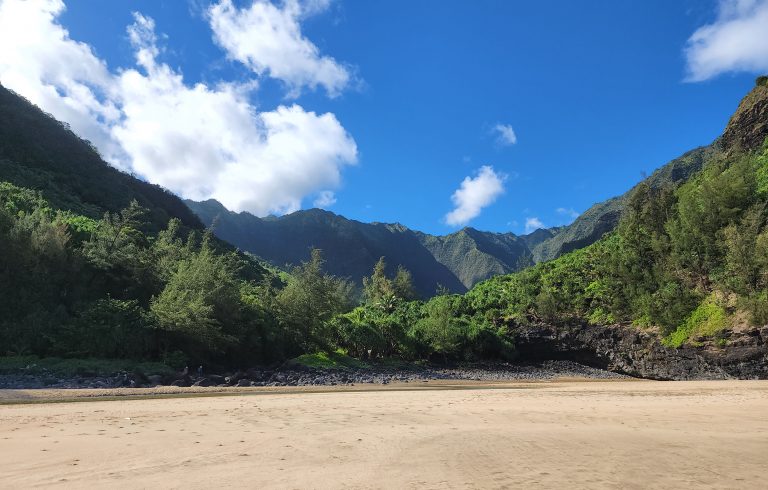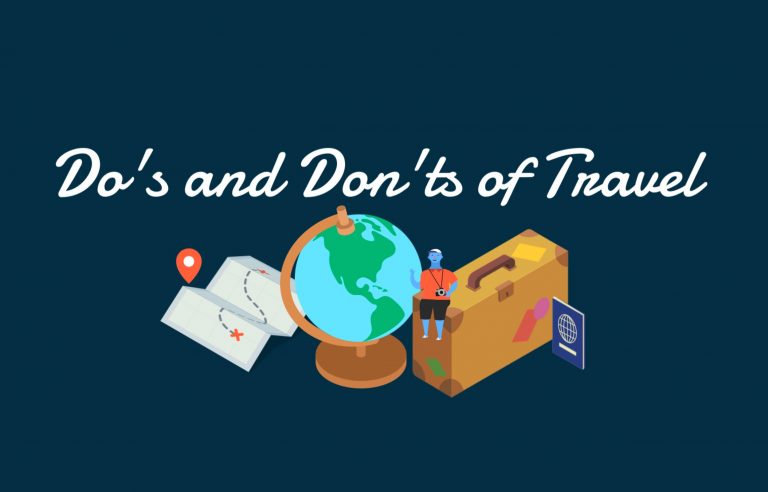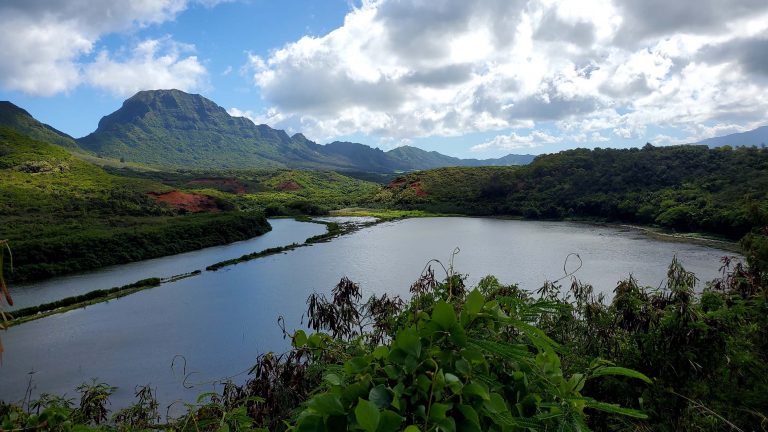Zombie Bunny is Reader-supported and may earn an affiliate commission through links on our site.

Unveiling the Top 10 Travel Hacks That Will Change The Way You Explore!
Discover the top 10 travel hacks that will revolutionize your voyages! Uncover secrets of savvy globe-trotters. #TravelHacks #TravelMore #SmartTravel
Embark on an adventure of a lifetime with our top ten travel hacks, designed to enhance your globetrotting experiences. From mastering the art of packing to overcoming language barriers, our blog post offers invaluable tips and strategies to transform your journeys. Discover how to dive into local culture, explore hidden gems, and navigate the complexities of travel planning with ease. Whether you’re an experienced explorer or a novice wanderer, these hacks are your secret weapon for unforgettable experiences. Dive in and revolutionize the way you see the world!
Introduction: Setting the Journey

© Copyright , ZombieBunny.Org
Setting the scene for travel exploration
Traveling is an adventure, a journey of self-discovery that embarks you into the vast expanses of the world unknown. It’s about basking in the diversities, exploring the unexplored, and immersing yourself in the unique tapestry of cultures that our world has to offer. This journey, although exhilarating, can be filled with uncertainties and challenges. The key to a smooth and fulfilling travel experience lies in preparation and smart strategies. This blog post is your golden ticket to just that!
We all have been there, standing at the brink of an exciting adventure, and yet, feeling overwhelmed by the sheer magnitude of planning and preparations it entails. With every destination boasting its own quirks and charms, the task of planning can be quite daunting. But what if we told you that you could transform your travel experiences with some simple yet effective hacks? This blog is all about unveiling those strategic hacks that will redefine your travel experiences. From mastering the art of packing to overcoming language barriers, these hacks are your secret weapon for making every journey an unforgettable experience. So, fasten your seatbelts and let’s embark on this journey to revolutionize the way you explore and experience the world!
Explaining the purpose of the blog post
This blog post is your guide to smart travel, your companion in turning those travel dreams into reality. It’s your one-stop solution to all travel-related queries and concerns, a comprehensive guide to making your trips more organized, efficient, and enjoyable. We understand that travel can be a roller-coaster ride of delightful highs and frustrating lows. This blog aims to tackle those lows, helping you navigate the complex world of travel with ease and confidence.
We’re here to help you master the art of travel. That’s why we’ve curated the top 10 travel hacks that will change the way you explore. These hacks are not just tips; they are tried and tested strategies from experienced travelers, globe-trotters who have tread on paths less traveled and learned from every misstep and triumph. This blog post will take you through these invaluable hacks, each elaborated with practical examples and personal experiences to give you a relatable and realistic guide. Whether you’re a seasoned traveler or a novice eager to explore, these hacks will open a new perspective on travel for you, making your experiences more enriching and less stressful. So, let’s dive in and unlock the secrets to smart and rewarding travel. Get ready to see travel in a new light, armed with hacks that will change your travel game forever!
Introducing the hacks to be discussed
Today, we’re going to unveil top 10 travel hacks that have the potential to revolutionize your travel experiences. These are not your everyday tips; they are strategic, smart, and designed to enhance your travel in ways you never imagined. We’ve collated these hacks from experiences of seasoned travelers, wisdom passed down from one journey to another, and practical advice that stands the test of time and terrain.
These hacks cover a wide spectrum of travel aspects. We start with mastering the art of packing, a skill that can make or break your travel experience. We will then dive into the world of budget travel, helping you make the most of your money while exploring the world. From there, we navigate the intricacies of public transportation systems, followed by immersing into the local culture for an authentic travel experience. Then, we’ll explore how technology can be your best travel companion, and the importance of planning for health and safety while traveling. We will also delve into the art of solo travel, efficient trip planning, finding hidden gems, and overcoming language barriers.
Each hack is detailed with practical examples and personal experiences for a holistic understanding. This blog post is your companion, your guide, and your confidante, as you prepare to embark on your next adventure. So, let’s set sail on this voyage of discovery, and unveil the top 10 travel hacks that will change the way you explore!
Hack 1: Mastering the Art of Packing

© Copyright , ZombieBunny.Org
The importance of packing light
Travel is all about freedom and flexibility. There’s nothing like the feeling of hopping on a plane or a train with just a backpack or a small suitcase, ready to explore the world. Packing light is the first step to this liberating experience. It not only makes your journey easier but also changes the way you travel, making it more spontaneous and enjoyable.
Packing light is an art that requires thoughtful planning and a minimalist mindset. It’s about prioritizing essentials over extras and understanding that less is indeed more when it comes to traveling. A lighter bag means more mobility, less time wasted on packing and unpacking, and fewer chances of losing or misplacing things. It’s a liberating feeling to be able to move around freely without being bogged down by heavy luggage.
Moreover, packing light also saves you from additional baggage fees and the hassle of checking in and retrieving your luggage. It also leaves room for any interesting items you might pick up during your travels. So, as you embark on your next journey, challenge yourself to pack less. Embrace minimalism, prioritize your necessities, and experience the freedom that comes with traveling light. Remember, every item you don’t pack is one less thing to worry about, leaving you more time and energy to focus on the adventures that await you.
Packing techniques for maximizing space
Packing efficiently is a game-changer. It can transform a crowded suitcase into a neatly organized container with room to spare. The secret lies in using smart packing techniques that maximize space. One such method is the roll-and-fold technique. This involves rolling your softer, wrinkle-resistant garments like t-shirts and cotton pants, and folding the stiffer ones like jeans and sweaters. This not only saves space but also helps prevent wrinkles.
Another space-saving hack is to use packing cubes. These small containers compartmentalize your suitcase and keep everything in place. They come in different sizes and allow you to pack similar items together, making it easier to locate your belongings without rummaging through your suitcase. You can also use them to compress your clothes and create more space.
Don’t forget to use the inside of your shoes as extra storage! They are perfect for storing small items like socks, chargers, or toiletries. Also, try layering your clothes in the suitcase, placing heavier items at the bottom and lighter ones on top. This arrangement not only optimizes space but also maintains balance in your luggage.
Remember, the objective is to utilize every inch of your suitcase efficiently. With these techniques in hand, you will be surprised at how much you can fit into your suitcase without going overboard. Happy packing!
Essential packing list
An essential part of packing light and efficiently is having a well-thought-out packing list. A good packing list is your roadmap to a suitcase that houses everything you need and nothing you don’t. Here’s a basic guide to creating an essential packing list.
First, consider your destination’s climate and culture. This will dictate the type of clothing you’ll need. Pack versatile pieces that can be layered and paired in different ways. This way, you can create multiple outfits with a minimal number of items. Don’t forget travel-friendly fabrics that are lightweight, easy to clean, and quick to dry.
Next, consider essential toiletries. Travel-size containers are your best friends here, allowing you to carry your necessities without taking up much space. Remember, most places will have supermarkets or local stores where you can buy common toiletries.
Then comes your travel documents. Always have a separate pouch for your passport, ID, tickets, and other essential documents. Also, keep digital copies of these documents in your email or cloud storage for extra security.
Other essentials include a good book or e-reader for those long journeys, a universal adapter, chargers for your electronic devices, travel snacks, and essential travel apps downloaded on your phone.
Lastly, don’t forget health essentials like medications, hand sanitizers, and face masks. Keeping these essentials in mind while packing will ensure you are prepared for various travel scenarios. Remember, the goal is to pack smart, not more. Happy travels!
Hack 2: Discovering Budget Travel
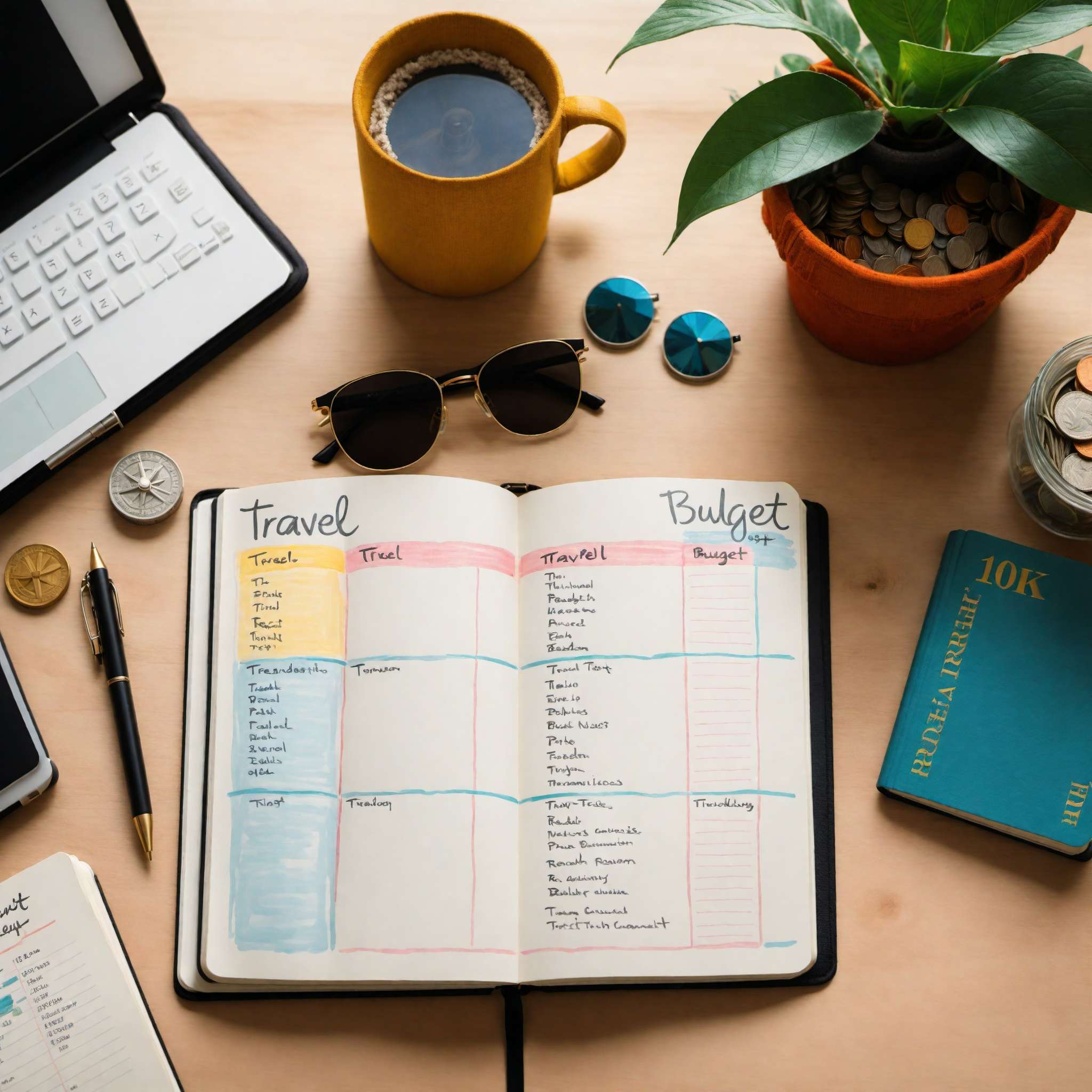
© Copyright , ZombieBunny.Org
Tips for saving on flights and accommodations
Traveling on a budget doesn’t mean compromising on experiences. It’s all about making smart choices, especially when it comes to flights and accommodations, which often make up the bulk of travel expenses. With a few strategic hacks, you can save significantly on these costs, allowing you to allocate more of your budget to experiences and exploration.
When booking flights, flexibility is key. Be open to traveling on weekdays or during off-peak hours when fares are typically lower. Use flight comparison websites to get an overview of the prices offered by different airlines. Don’t forget to clear your browser cookies or use incognito mode to ensure you’re seeing the most current prices. Also, consider booking connecting flights instead of direct ones, as they can often be cheaper.
As for accommodations, consider alternatives to traditional hotels. Platforms like Airbnb or Booking.com offer a wide range of options from budget-friendly hostels to homestays, which not only save you money but also offer a more local experience. Booking accommodations with kitchen facilities can also save you money on meals. If your travel dates are flexible, try to avoid peak seasons when prices tend to skyrocket.
Lastly, don’t underestimate the value of loyalty programs. Many airlines and hotel chains offer rewards programs that can lead to free flights or stays. Traveling on a budget is all about being resourceful, flexible, and making your money work for you, not against you. Happy savings!
Explaining the concept of budget travel
Budget travel isn’t about restricting yourself or settling for less. It’s about making informed decisions that allow you to see the world without breaking the bank. It’s about understanding that experiences don’t always have to come with a hefty price tag, and that with a bit of planning and smart choices, you can make your travel dreams come true on a budget.
At its core, budget travel is about prioritizing. It’s about deciding what is most important to you and allocating your resources accordingly. Perhaps you’d prefer to splurge on a once-in-a-lifetime experience rather than a luxury hotel. Or maybe local cuisine excites you more than fine dining. Budget travel is about making these choices consciously and finding joy in the experiences that truly matter to you.
It’s also about being resourceful and flexible. This could mean taking advantage of off-peak prices, staying in less touristy areas, or using public transport instead of taxis. It’s about understanding the trade-offs and making them work in your favor.
Budget travel often leads to more authentic experiences. It encourages you to engage with local culture, to seek out local markets and street food, and to find joy in the simple, everyday experiences of a new place. In essence, budget travel isn’t a compromise, it’s a choice – a choice to experience the world in a way that is meaningful, authentic, and economically sustainable.
Advice for eating and sightseeing on a budget
Traveling on a budget doesn’t mean you have to miss out on fantastic food or incredible sights. It’s all about knowing where to look and how to maximize your spending. For food, try exploring local markets and street food stalls. They often offer delicious, authentic food at a fraction of the cost of restaurants. Plus, you get to experience the local culture first-hand.
If you have access to a kitchen where you’re staying, consider cooking some meals yourself. Visit local grocery stores or markets to buy ingredients, and try your hand at making some local dishes. This not only saves money but also makes for an exciting culinary adventure.
When it comes to sightseeing, research is your best friend. Many cities offer free or discounted entry to museums and attractions on certain days or times. Look out for these deals. Similarly, city tourist cards often offer great value, providing free entry to numerous attractions and public transport for a set price.
Walking tours are also a fantastic and often inexpensive way to see a city. They usually cover major landmarks and are led by knowledgeable guides who can provide interesting insights. Alternatively, self-guided walking tours allow you to explore at your own pace.
Remember, the best things in life are free. A beautiful sunset, a walk through a bustling local market, or a chat with a friendly local doesn’t cost a dime. Embracing this mindset is the key to enjoying your travels while sticking to your budget.
Hack 3: Navigating Public Transportation
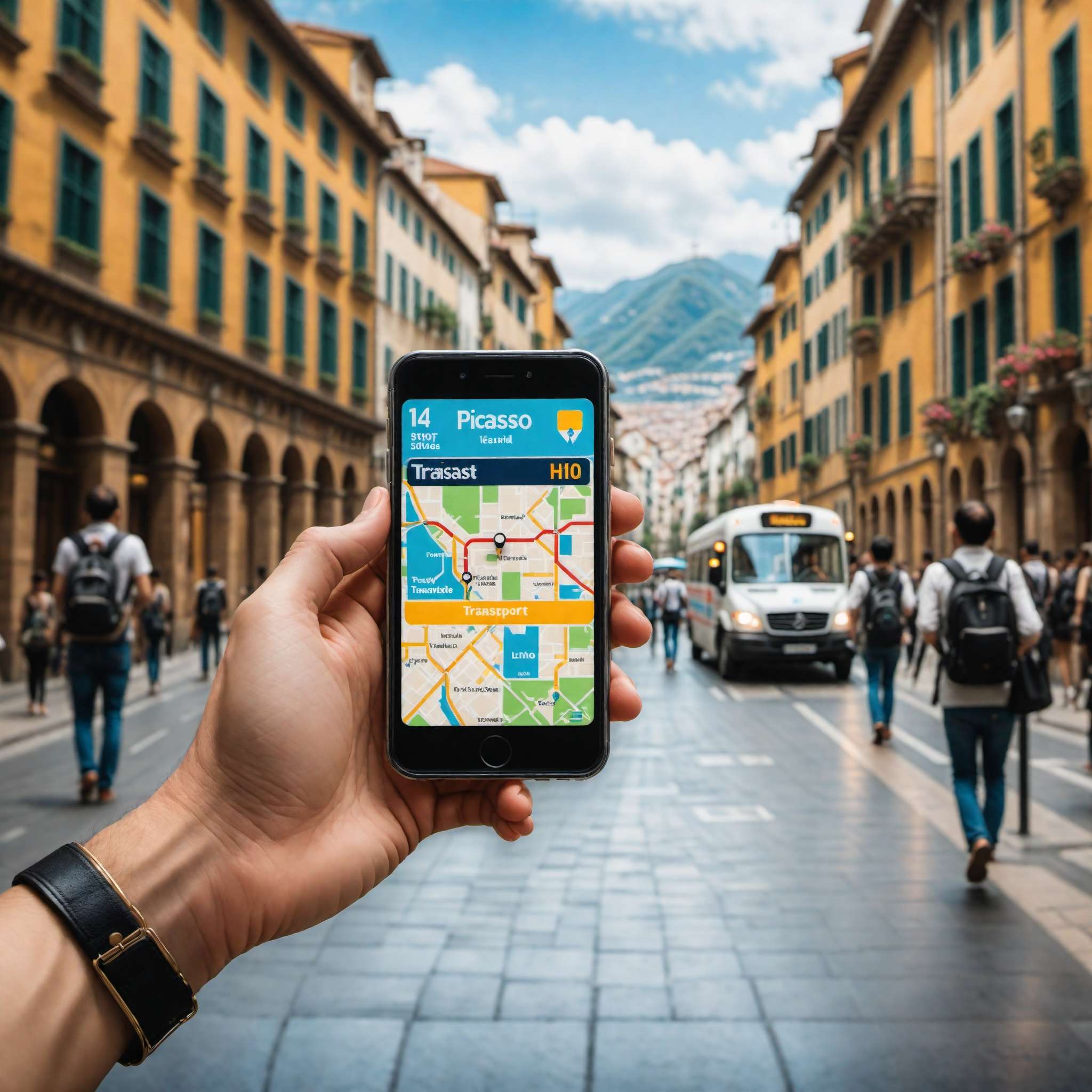
© Copyright , ZombieBunny.Org
Understanding different public transport systems
Public transportation is the lifeblood of any city. It connects different parts of the city and provides an affordable and sustainable means of travel. But every city has a unique public transport system, and understanding these systems is essential for any traveler.
Buses, trains, trams, and subways are the most common forms of public transportation. They usually have extensive networks covering major parts of the city. Familiarize yourself with the routes that pass through the areas you plan to visit. Many cities provide route maps and schedules online, or you can use various transit apps that provide real-time updates.
Tickets come in various forms – single journey tickets, day passes, rechargeable cards, and mobile tickets. Consider your travel needs and choose the most cost-effective option. Always remember to validate your ticket where required, as fines for traveling without a valid ticket can be hefty.
Public transport systems also offer a glimpse into the local way of life. They are a great place to people-watch and absorb the local culture. Plus, they’re more sustainable than private taxis or rental cars.
Remember, the aim is to get from point A to point B efficiently and economically. With a bit of research and planning, navigating public transportation can be a breeze, allowing you to explore your destination like a local. It’s all part of the adventure and the experience of traveling. So, hop on that bus, tram, or train and let the journey begin!
Tips for using public transport efficiently
Using public transportation efficiently is a skill that can elevate your travel experiences. The key lies in planning, understanding the local systems, and a few strategic tips. Let’s explore some of these tips that can help you navigate public transport like a pro.
Firstly, do your research. Familiarize yourself with the routes, schedules, and ticketing systems of the public transport in your destination city. Many cities offer dedicated apps for their public transport systems that provide real-time updates and route planning features.
Secondly, consider buying a travel card or pass if you plan to use public transport frequently. These often offer unlimited travel within certain zones and can be more cost-effective than buying individual tickets.
Next, always have a backup plan. Public transport can sometimes be unpredictable, so be ready with an alternative route. This is where your research and route planning apps come in handy.
Remember to respect the local etiquette. Some cities have specific rules for public transport such as giving up seats for the elderly or not eating on the bus. Being aware of these rules is not only respectful but also helps you blend in with the locals.
Lastly, keep an eye on your belongings while using public transport, especially during peak hours. Being mindful of your surroundings ensures a safe and comfortable journey. With these tips, you’re well on your way to mastering the art of using public transport efficiently, making your travels smoother and more enjoyable.
Lessons from personal experiences
Navigating public transportation is often filled with lessons learned through personal experiences, and these lessons can be invaluable for other travelers. I remember my first encounter with Tokyo’s extensive subway system. The intricate web of lines seemed daunting at first, but with a bit of research and the help of a handy subway app, it soon became a thrilling challenge. I learned the importance of understanding the direction of the lines, as many stations have trains departing in multiple directions.
In another instance, while navigating the bus system in a small town in Italy, I learned the importance of having a backup plan. When a bus I was waiting for didn’t arrive, I had to quickly figure out an alternative route. Thankfully, I had previously noted down multiple ways to get to my destination.
These experiences also taught me the value of interacting with locals. Often, they provided invaluable advice on the quickest routes or less crowded times to travel. They even helped me buy tickets from machines when instructions were not in English.
These personal experiences in using public transportation have enriched my travels immensely. They have taught me to be adaptable, resourceful, and open to asking for help. And above all, they have made me appreciate the journey as much as the destination. I believe that’s what travel is all about – enjoying the ride, learning from the experiences, and embracing the unexpected.
Hack 4: Embracing Local Culture
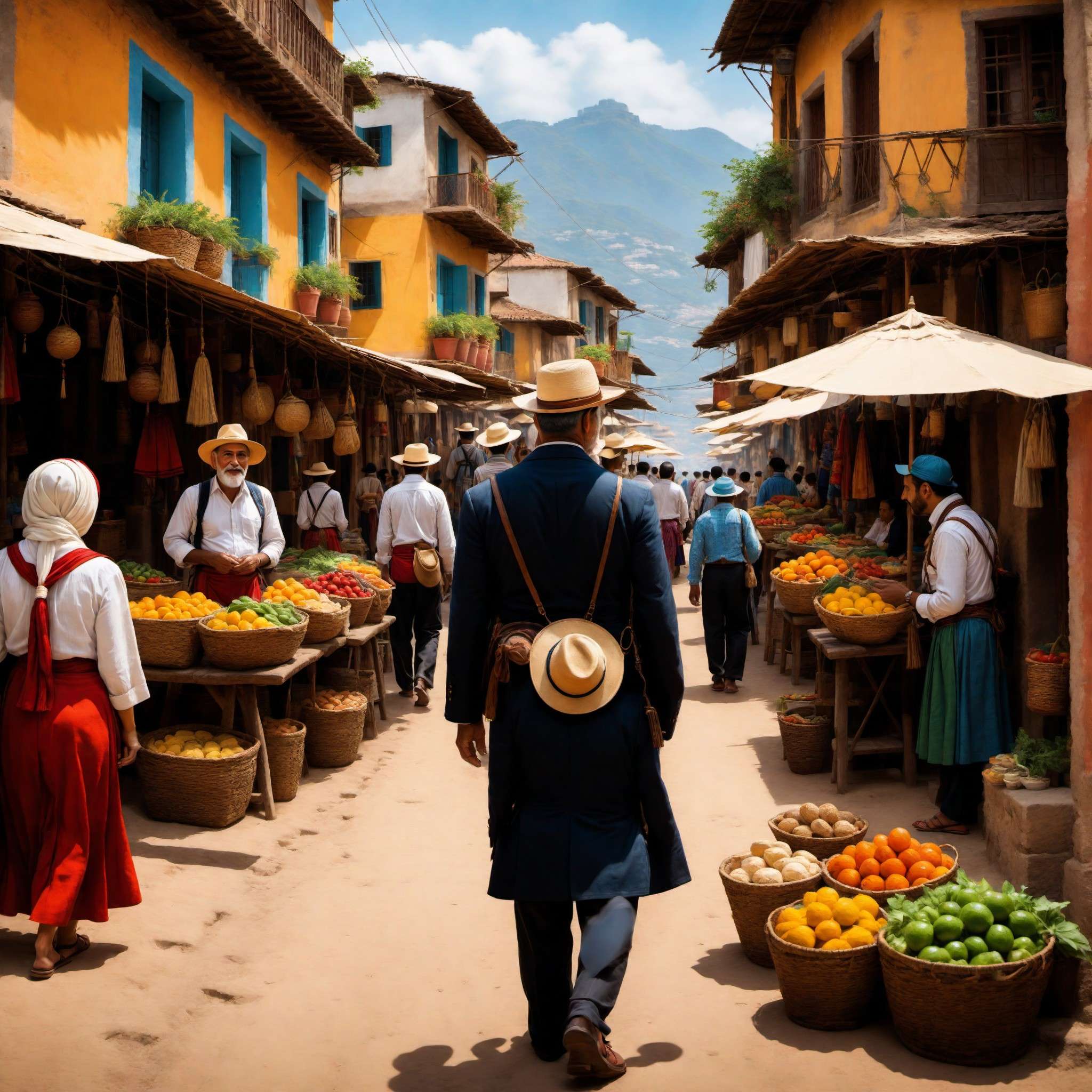
© Copyright , ZombieBunny.Org
The importance of learning local customs
Immersing yourself in the local culture is an integral part of any travel experience. It helps you see the world through a different lens, enriches your understanding of different ways of life, and creates memories that last a lifetime. An essential aspect of this immersion is learning about and respecting local customs.
Understanding local customs is a sign of respect. It shows that you acknowledge and appreciate the cultural differences, and are willing to embrace them. It also opens doors to deeper interactions with locals, leading to a more authentic travel experience.
Local customs can encompass a wide range of aspects – from correct greetings, local dining etiquette, to dress codes at religious sites. For example, in Japan, it’s customary to bow when greeting someone. In many Middle Eastern countries, conservative dress is expected, especially for women. In India, it’s common to eat with your hands. Being aware of such customs not only saves you from potential faux pas but also enhances your cultural experience.
Furthermore, understanding local customs can also provide practical benefits. For instance, knowing the local customs around bargaining can help you navigate local markets, and understanding tipping etiquette can save you from awkward situations.
Remember, travel is not just about seeing new places, but also about experiencing new cultures. By taking the time to learn about and respect local customs, you enrich your travel experiences, fostering a deeper connection with the places you visit and the people you meet. Happy cultural immersion!
Tips for immersing in local culture
Immersing yourself in local culture is one of the most rewarding aspects of travel. It provides a deeper understanding of the place you’re visiting and creates more meaningful travel experiences. Here are some tips to help you immerse in the local culture during your travels.
Start with learning a few basic phrases in the local language. This not only shows respect for the local culture but also helps in interacting with locals. Even a simple greeting or a thank you in the local language can go a long way in fostering positive interactions.
Next, make local food a part of your journey. Exploring local cuisine is a delicious way to understand a culture. Don’t be afraid to step out of your comfort zone and try something new. Visit local markets, try street food, or even take a cooking class to learn about traditional dishes.
Make an effort to interact with locals. Strike up conversations, ask about their customs and way of life. Locals are often the best source of information about their city and can offer insights that you won’t find in any guidebook.
Finally, participate in local traditions and festivals. This is an excellent opportunity to experience the local culture firsthand. Whether it’s a religious ceremony, a local fair, or a music festival, being part of these events provides a unique cultural immersion.
Remember, immersing in local culture is about being open, respectful, and eager to learn. Embrace these experiences, and you’ll find your travels becoming more enriching and memorable.
Benefits of traveling like a local
Traveling like a local is more than just a travel trend; it’s a mindset that can transform your travel experiences. It involves stepping off the beaten path, seeking authentic experiences, and immersing yourself in the local culture. The benefits of this approach are manifold.
Firstly, traveling like a local provides a more authentic and enriching travel experience. You get to see a side of the destination that most tourists don’t, be it hidden gems, local festivals, or offbeat neighborhoods. You get to experience the destination in its raw, unfiltered form, and that’s where the real magic of travel lies.
Secondly, it leads to more meaningful interactions. When you travel like a local, you interact more with the local community. You learn from them, share experiences, and create lasting connections. This not only enhances your travel experience but also fosters mutual respect and understanding.
Thirdly, it often leads to more sustainable travel. By supporting local businesses, using public transport, and respecting local customs and environment, you contribute to the local economy and promote responsible tourism.
Lastly, it can also be more economical. Local eateries, local markets, and public transportation are often cheaper than tourist-targeted alternatives.
In essence, traveling like a local allows you to experience a destination in its truest form. It’s about embracing the local culture, respecting the local norms, and making the most of your travel experiences. After all, we travel not to escape life, but to ensure life does not escape us.
Hack 5: Leveraging Technology for Travel
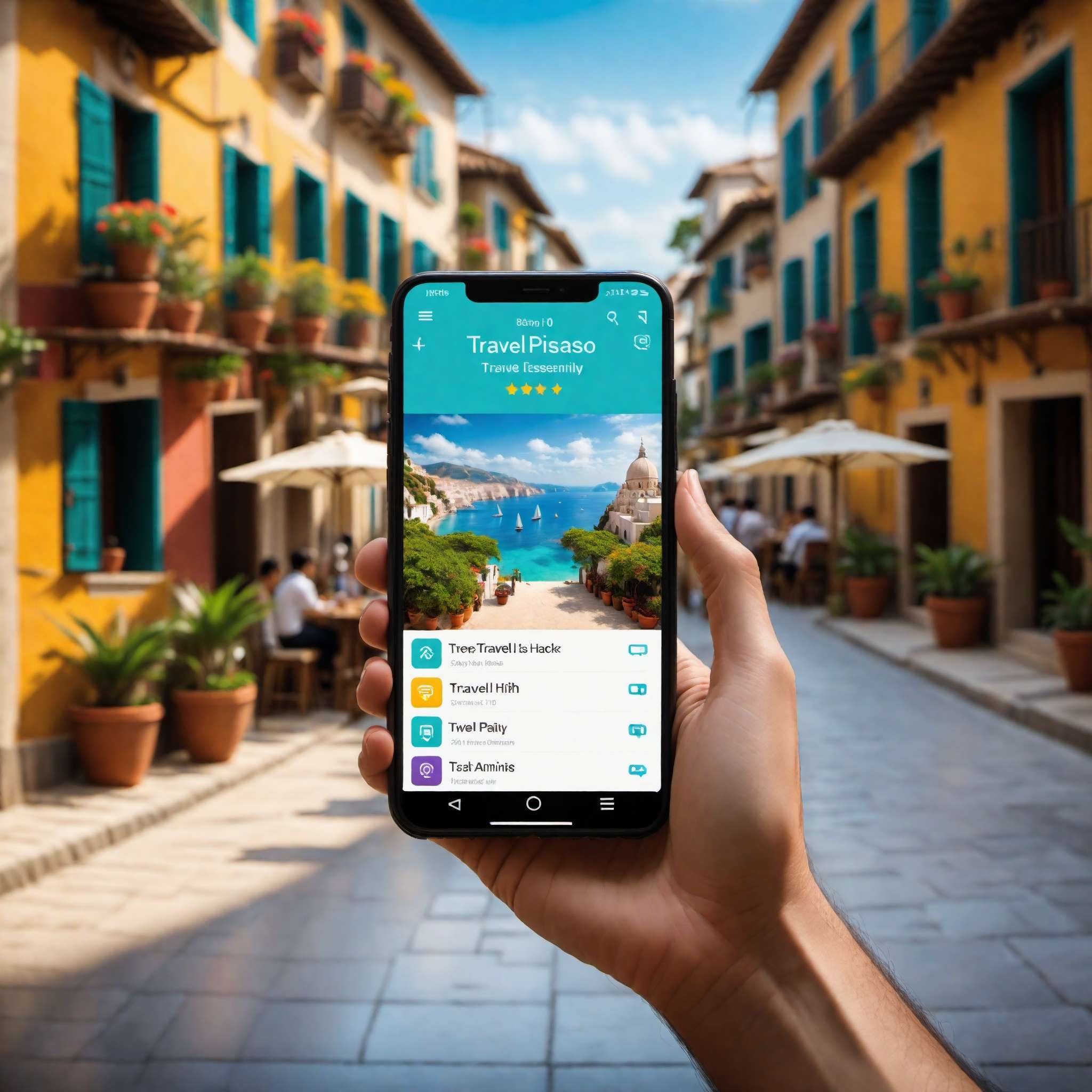
© Copyright , ZombieBunny.Org
Recommended travel apps
In the digital age, technology can be your best travel companion. A plethora of travel apps exist to make every aspect of travel more manageable and enjoyable. From planning your itinerary, navigating unfamiliar cities, to even learning a new language, there’s an app for it all. Here are some recommended travel apps to enhance your journey.
For flight and hotel booking, apps like Skyscanner and Booking.com offer a wide range of options with price comparison features. They also provide alerts for price drops and last-minute deals.
For navigation and public transport, Google Maps is a reliable choice. It provides real-time updates, walking routes, and public transport options. Citymapper is another excellent app for navigating public transport in major cities worldwide.
If language is a barrier, apps like Duolingo and Google Translate can be lifesavers. They offer language lessons and instant translations, respectively, helping you communicate in different languages.
For food and restaurant recommendations, check out Yelp or TripAdvisor. They provide reviews and ratings by fellow travelers, helping you discover the best local eats.
To keep your travel documents and itineraries organized, consider apps like TripIt. It consolidates all your travel plans in one place, accessible even offline.
Lastly, for currency conversions, XE Currency is a popular choice. It provides live currency rates and can function offline, saving you from mental math and potential rip-offs.
These apps are designed to make your travel smoother and more enjoyable. So, embrace technology and let it guide your way as you explore the world!
Using technology for navigation and translation
Technology has made navigation and translation significantly easier for travelers, eliminating the need for physical maps and language dictionaries. With the right apps, you can navigate foreign cities with ease and communicate in different languages like a pro.
For navigation, Google Maps is a powerhouse. It offers turn-by-turn directions for walking, public transport, and driving. You can download maps for offline use, locate nearby amenities, and even view real-time traffic updates. Citymapper is another great app that provides detailed public transport routes and real-time departure times in many major cities worldwide.
When it comes to translation, Google Translate is a must-have. It supports over 100 languages and offers several modes of translation. You can type or speak a phrase to be translated, or use your camera to translate text in images, perfect for menus or signs in a foreign language. The app also allows you to download languages for offline translation.
For a more interactive and immersive learning experience, Duolingo offers bite-sized lessons in a variety of languages. It’s a great tool to pick up basic phrases or expand your vocabulary in a new language.
These apps are transforming the way we navigate and communicate while traveling, making it more accessible and less intimidating. The world is becoming more connected, and with these tools in your tech arsenal, you can explore it with confidence and ease.
Benefits of staying connected while traveling
Staying connected while traveling is more than just being able to post updates on social media or stay in touch with loved ones. It’s about having access to a wealth of information and resources at your fingertips, enhancing your travel experience, and providing a safety net when you need it.
One of the key benefits of staying connected is the ability to access real-time information. This could be checking the opening times of a museum, getting live updates on public transport, or checking the weather forecast. This real-time access can help you plan your days more efficiently and make informed decisions on the go.
Being connected also allows you to tap into a global community of travelers. Online forums and social media groups are treasure troves of travel tips, recommendations, and advice. They can provide insights that guidebooks don’t, giving you a more authentic travel experience.
Furthermore, staying connected can be crucial for safety. In case of emergencies, being able to make a call, access GPS, or look up essential information can be a lifesaver. You can also keep family and friends updated about your whereabouts, providing peace of mind for both you and them.
Lastly, being connected allows you to capture and share your travel experiences in real-time, creating a digital travel diary that you can look back on. While it’s essential to disconnect and enjoy the moment, staying connected offers numerous benefits that can enhance your travel experience, making it more enjoyable, safe, and memorable.
Hack 6: Planning for Health and Safety
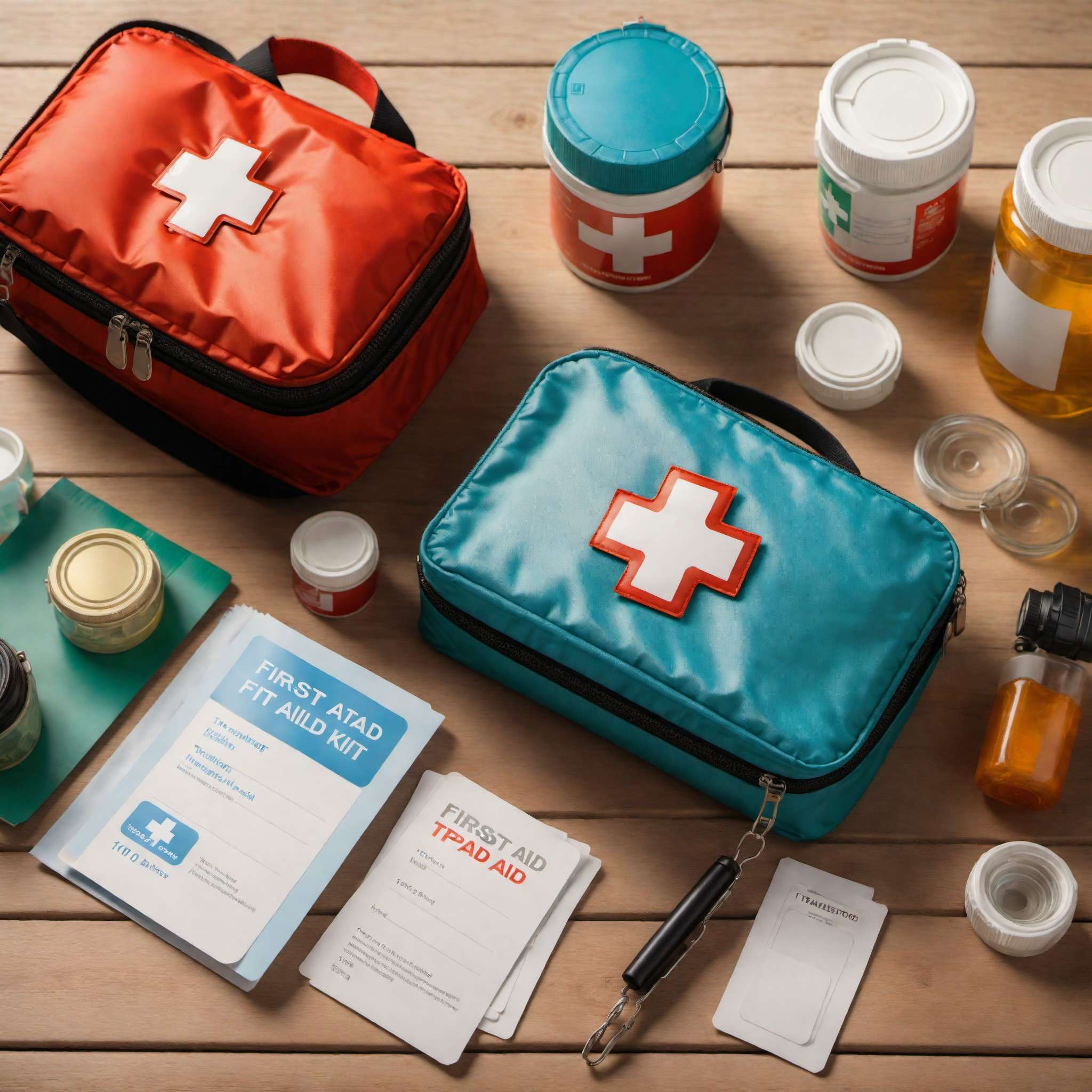
© Copyright , ZombieBunny.Org
Importance of travel insurance
Travel insurance is a crucial part of any travel plan, yet it’s often overlooked by many travelers. But why is it so important? Simply put, travel insurance is your financial safety net while you’re away from home. It provides coverage for a range of unforeseen situations that can occur during your travels, from medical emergencies to trip cancellations or lost belongings.
Imagine falling ill or getting injured in a foreign country where medical costs might be high, or where you may not have access to the necessary healthcare facilities. Travel insurance typically covers emergency medical expenses, ensuring you get the treatment you need without burning a hole in your pocket.
In addition to medical coverage, travel insurance can also cover trip cancellations or interruptions due to unforeseen circumstances. If you’ve pre-paid for flights, accommodations, or tours, this coverage can save you from substantial financial loss.
Travel insurance also often includes baggage coverage. This can cover the cost of replacing lost, stolen, or damaged luggage and personal belongings. Some policies even offer coverage for delays, providing reimbursement for essentials like clothing and toiletries if your bags are delayed.
Remember, while we all hope for smooth travels, it’s always better to be prepared for the unexpected. Travel insurance provides that peace of mind, allowing you to focus on enjoying your trip. So, before you embark on your next adventure, ensure you’re covered with a suitable travel insurance plan. It’s a small price to pay for a worry-free journey.
Essential health tips for travelers
Maintaining good health while traveling is essential to fully enjoy your experiences. Here are some essential health tips for travelers that can help ensure a smooth and enjoyable journey.
Firstly, stay hydrated. Traveling often involves long flights, hot climates, and busy days, all of which can dehydrate you. Carry a reusable water bottle and make sure you’re drinking enough water throughout the day.
Eating healthy is equally important. While it’s tempting to indulge in local delicacies, try to maintain a balanced diet. Include fruits, vegetables, and lean proteins in your meals. Also, be cautious of where you eat. Opt for places that are busy and have a high turnover of food to ensure freshness.
Don’t neglect your physical activity. Incorporate some form of exercise into your travel routine. It could be as simple as walking tours, swimming in the hotel pool, or a quick workout in the hotel gym.
Get enough rest. Traveling can be exhausting, and it’s crucial to give your body time to recover. Ensure you’re getting a good night’s sleep and taking short breaks throughout the day if needed.
Lastly, stay updated on vaccinations. Depending on your destination, certain vaccinations may be required or recommended. Consult with a healthcare professional before your trip to ensure you’re protected.
Remember, travel is a time to explore and enjoy, but it’s also important to listen to your body and take care of your health. After all, a healthy traveler is a happy traveler!
Safety precautions while traveling
When it comes to traveling, safety should always be a priority. While every destination is different and requires varying levels of caution, there are general safety precautions that all travelers should follow.
Firstly, do your research. Learn about your destination’s safety conditions, local customs, and laws. Be aware of any travel advisories or warnings issued for your destination. Knowledge is your first line of defense.
Next, keep your belongings secure. Use hotel safes for valuables and don’t carry large amounts of cash. Be mindful of your belongings, especially in crowded places where pickpocketing can occur.
It’s also essential to stay connected. Share your travel itinerary with family or friends back home, so someone knows where you are. Also, keep local emergency numbers saved in your phone.
Maintain a low profile and blend in with the locals as much as possible. Avoid flaunting expensive belongings or looking obviously like a tourist, which might make you a target for scams or theft.
Always trust your instincts. If something or someone makes you feel uncomfortable, remove yourself from the situation. Your intuition is a powerful tool.
Lastly, ensure you have comprehensive travel insurance. It’s a safety net that protects you against unforeseen circumstances, from health emergencies to trip cancellations.
By taking these safety precautions, you can ensure a more secure and enjoyable travel experience. Remember, the key to safe travel is awareness, preparedness, and common sense. Safe travels!
Hack 7: Mastering the Art of Solo Travel
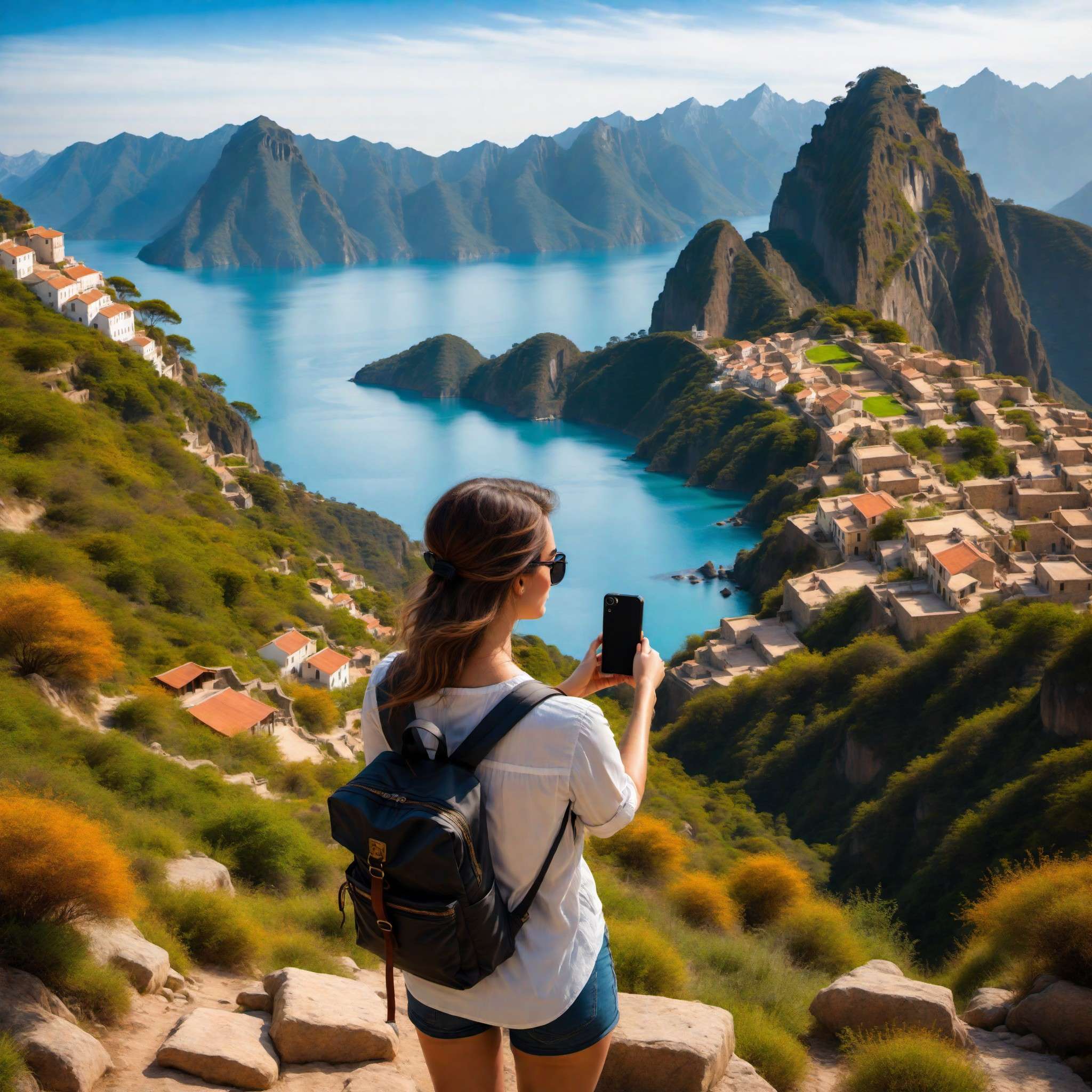
© Copyright , ZombieBunny.Org
Benefits of solo travel
Solo travel can be an exhilarating and transformative experience, offering benefits that are unique to this mode of exploration. If you’ve never embarked on a solo journey, here are the compelling reasons that might inspire you to take the plunge.
Firstly, solo travel offers unmatched freedom. You’re the sole decision-maker for your itinerary, your pace, and your experiences. Whether you want to wake up for sunrise, spend an extra hour at a museum, or impulsively take a detour, the choice is yours.
Solo travel also fosters self-reliance and resourcefulness. You’ll be handling all aspects of your travel, from planning and navigating to problem-solving. These experiences can boost your confidence and equip you with skills that extend beyond your travel life.
Moreover, traveling solo often leads to more meaningful interactions with locals and fellow travelers. You’re more approachable when you’re by yourself, leading to interesting conversations and potential friendships.
One of the most profound benefits of solo travel is self-discovery. Being alone with your thoughts, navigating new experiences, and stepping out of your comfort zone can lead to self-reflection and personal growth. You’ll likely return home with a deeper understanding of yourself and a renewed perspective on life.
In essence, solo travel is a journey of freedom, growth, and self-discovery. It’s about embracing the unknown, savoring the joy of your own company, and writing your own adventure. It might seem daunting at first, but the rewards are truly enriching.
Safety tips for solo travelers
When traveling solo, safety becomes even more crucial. You are responsible for your well-being, and taking a few key safety precautions can go a long way in ensuring a smooth journey. Here are some safety tips specifically for solo travelers.
First and foremost, always keep someone informed about your itinerary. Share your travel plans, hotel details, and contact information with a trusted person back home. Regularly check-in with them so they know you’re safe.
Next, be aware of your surroundings. Stay vigilant, especially in crowded places. Avoid deserted areas, especially at night, and always trust your instincts. If something doesn’t feel right, it probably isn’t.
Take care of your belongings. Keep your valuables secure and avoid flashing expensive items that might attract unwanted attention. Use hotel safes when available and carry only what you need for the day.
Staying connected is also important. Keep your phone charged and operational. Save important numbers like local emergency services and your home country’s embassy.
Finally, invest in travel insurance. It can cover a range of unforeseen situations, from medical emergencies to lost luggage. It’s a small price to pay for peace of mind.
Despite these precautions, remember to enjoy your journey. Most people you’ll meet are kind and helpful, and the world is not as scary as it sometimes seems. These safety tips are not meant to scare you but to prepare you. So venture out confidently, embrace the solo travel experience, and create unforgettable memories.
Inspiring solo travel stories
Solo travel has the power to transform, inspire and empower. To illustrate this, let’s delve into some inspiring solo travel stories.
Consider Emma, a graphic designer from Canada, who embarked on a solo trip to Southeast Asia after a major life change. She navigated bustling markets, hiked through lush landscapes, and even learned to scuba dive. But the highlight of her journey was a 10-day silent meditation retreat in Thailand. It was a challenging yet profoundly rewarding experience that helped her find inner peace and resilience.
Then there’s Carlos, a retiree from Spain, who fulfilled his dream of walking the Camino de Santiago alone. Over 30 days, he trekked across the Spanish countryside, meeting fellow pilgrims from around the world. Despite the physical challenges, he completed the pilgrimage and described it as one of the most fulfilling experiences of his life.
Finally, there’s Priya, a solo female traveler from India, who explored Europe on her own. She navigated different languages, cultures, and public transport systems, all while facing the stereotypes associated with solo female travel. Her journey was a testament to her courage and a beacon of inspiration for other aspiring solo female travelers.
These stories highlight the transformative power of solo travel. It’s about stepping out of your comfort zone, embracing the unknown, and discovering your strengths. It’s a journey of self-discovery, adventure, and personal growth. So why not embark on your solo journey and create your inspiring travel story?
Hack 8: Learning Efficient Trip Planning

© Copyright , ZombieBunny.Org
Creating an efficient travel itinerary
Creating an efficient travel itinerary is an art. It’s about striking the right balance between sightseeing, relaxation, and spontaneity. Here are some tips to help you craft an efficient and enjoyable travel plan.
Start by researching your destination. Understand the geography, key attractions, local customs, and weather. This will help you decide what to see, what to do, and what to pack. Use resources like travel blogs, guidebooks, and local tourism websites for accurate information.
Next, prioritize your activities. List down everything you want to do and then rank them based on your interest level. This will ensure you cover your must-dos and help you let go of less important activities if you run short on time.
While planning your days, group activities based on their location. This will save you travel time and make your itinerary more efficient. Also, consider the opening hours of attractions to avoid disappointments.
Don’t forget to factor in rest and free time. Traveling can be tiring, and you’ll need downtime to relax. Plus, leaving room for spontaneity can lead to some of the best travel experiences.
Lastly, keep your itinerary flexible. Delays, changes in weather, or new discoveries can require adjustments to your plan. Be open to change and go with the flow.
Remember, your itinerary is a guide, not a rulebook. It’s there to help you make the most of your time without adding stress. So, plan wisely, but stay flexible, and enjoy your journey!
Balancing between planned activities and free time
Balancing between planned activities and free time is key to a fulfilling travel experience. While it’s essential to have a plan, it’s equally important to allow room for spontaneity and relaxation. Here’s how to strike the right balance.
When planning your itinerary, resist the urge to pack in too many activities. Trying to see and do everything can lead to burnout and rob you of the joy of exploration. Prioritize your must-dos and spread them out over your travel days.
Allocate free time in your schedule. This could be a few hours in the afternoon for a leisurely lunch, an evening stroll, or simply unwinding at a local café. This downtime not only helps you relax and recharge but also allows you to absorb the local atmosphere and culture.
Free time also opens up opportunities for unexpected adventures. You might stumble upon a local market, meet fellow travelers, or discover a hidden gem that wasn’t on your itinerary. Some of the best travel memories often come from these unplanned experiences.
Remember to stay flexible. If you find you’re enjoying a particular place, allow yourself to stay longer. If a planned activity isn’t as exciting as you thought, feel free to move on.
Travel is not just about ticking off attractions; it’s about immersing in new experiences, connecting with different cultures, and creating memories. So, plan your journey, but let the road surprise you too. After all, the magic often lies in the unexpected.
Useful trip planning tools
In today’s digital age, there’s a plethora of trip planning tools that can simplify the process and make your travel planning more efficient. These tools can help with everything from researching destinations and booking flights to creating detailed itineraries. Here are a few recommended tools to consider.
For flight and hotel bookings, websites and apps like Skyscanner, Booking.com, and Airbnb are invaluable. They offer a variety of options, compare prices, and provide user reviews to help you make informed decisions.
When it comes to itinerary planning, apps like TripIt and Sygic Travel can be a lifesaver. They allow you to organize your travel plans in one place, including flights, accommodations, and activities. You can even share your itinerary with others and access it offline.
For navigating around your destination, Google Maps is a go-to tool. It offers detailed maps, driving directions, public transport information, and even recommendations for nearby attractions and restaurants.
To keep track of your expenses, consider apps like Trail Wallet or Trabee Pocket. They can help you manage your travel budget and track your spending in various categories and currencies.
Lastly, for destination research and inspiration, websites like Lonely Planet, TripAdvisor, and travel blogs provide valuable insights and tips from fellow travelers.
These tools can not only streamline your trip planning process but also help you travel smarter and more efficiently. So embrace the power of technology and let it guide your travel planning journey.
Hack 9: Uncovering Hidden Gems

© Copyright , ZombieBunny.Org
Tips for finding off-the-beaten-path spots
Finding off-the-beaten-path spots can make your travels more unique and memorable. These hidden gems offer a glimpse into the local culture and lifestyle, often untouched by mass tourism. Here are some tips to help you uncover these lesser-known treasures.
Start by doing your research. Travel blogs, local guides, and social media can be great resources. Look for articles or posts about hidden gems or lesser-known attractions in your destination.
Next, consider using mapping tools like Google Maps. Exploring the map can reveal interesting places that you might not find in guidebooks. Look for green areas for parks, blue patches for lakes, and check out the ‘photos’ section for inspiration.
Talking to locals is arguably the best way to find hidden gems. Locals know their area best and can provide recommendations that you won’t find online. This could be a local eatery, a neighborhood market, or a scenic hike.
Joining local tours or activities can also lead to discoveries. Often, these experiences are led by locals passionate about their community and eager to share their hidden treasures.
Finally, be open to exploration. Sometimes, the best hidden gems are found when you simply wander and let curiosity lead the way.
Remember, travel isn’t just about famous landmarks; it’s about experiences, discoveries, and connections. So venture beyond the tourist trail, uncover those hidden gems, and create your unique travel story.
Experiences from discovering hidden gems
Finding hidden gems in your travels can lead to some of the most rewarding and memorable experiences. These unique discoveries often bring you closer to the local culture and away from the typical tourist trail, providing authentic and enriching experiences.
For instance, consider the experience of Alex, a traveler in Japan, who, on a local’s recommendation, visited a small, family-run sushi restaurant tucked away in a Tokyo alley. Here, he enjoyed some of the best sushi of his life, observed the artisanal craft of sushi-making, and conversed with the sushi master with the help of hand gestures and smiles.
Or take the story of Maria, a solo traveler in Italy, who stumbled upon a quaint village during a coastal hike in Cinque Terre. Far from the tourist crowds, she spent a delightful afternoon sipping homemade limoncello, chatting with friendly locals, and soaking in the serene views of the Mediterranean Sea.
Then there’s the tale of Sam, an adventure traveler, who discovered a hidden waterfall in the jungles of Costa Rica while on a guided wildlife tour. The waterfall, known only to locals, offered a refreshing swim and a stunning backdrop for photos.
These experiences highlight the joy of discovering hidden gems. They add an element of surprise, adventure, and authenticity to your travels. So, venture off the beaten path, seek local insights, and be open to exploration. You never know what hidden treasures you’ll uncover on your journey!
Advantages of not always following the crowd
While popular tourist spots have their allure, there’s a whole world of advantages to not always following the crowd when you travel. Venturing off the beaten path can enhance your travel experience in ways that mass tourism cannot.
Firstly, you can discover unique attractions and experiences. Hidden gems often offer a fresh perspective on your destination, away from the tourist clichés. Whether it’s a secluded beach, a local market, or a charming neighborhood café, these discoveries can make your trip more memorable.
Exploring less crowded places also allows you to connect more authentically with the local culture. Without the filter of mass tourism, you can experience the local lifestyle, customs, and cuisine more genuinely.
Furthermore, avoiding tourist crowds often means less stress and more enjoyment. You can escape the long queues, the jostling crowds, and the commercialized experiences. Instead, you can enjoy your discoveries at your own pace, in a more relaxed and personal manner.
Lastly, by venturing off the tourist trail, you can contribute to sustainable tourism. Visiting less popular areas helps distribute tourist revenue more evenly and reduces the pressure on over-touristed sites.
In essence, not always following the crowd can enrich your travel experience in many ways. It allows you to explore deeper, connect more authentically, and travel more responsibly. So, on your next journey, dare to step away from the crowd and carve your own path. The adventure and discoveries awaiting are worth it!
Hack 10: Overcoming Language Barriers

© Copyright , ZombieBunny.Org
Learning basic phrases in the local language
Learning basic phrases in the local language can significantly enhance your travel experience. It not only helps you navigate everyday situations but also creates a positive impression with the locals. Here are some reasons why this simple effort can go a long way.
Being able to communicate basic needs and questions in the local language can be incredibly helpful. Phrases like “Where is the bathroom?”, “How much does this cost?”, or “Can you help me?” can come in handy in various situations. It can make your interactions smoother and less stressful.
Locals often appreciate the effort you put into learning their language. Even if your pronunciation isn’t perfect, the fact that you’re trying can create a sense of goodwill and respect. It shows that you value their culture and are not just a passive tourist.
Speaking the local language, even a little, can also open doors to more authentic experiences. It can lead to more meaningful interactions with locals, and they might share local tips, stories, or even invite you to local events, enhancing your travel experience.
Finally, learning a new language, even just the basics, is a rewarding experience in itself. It’s a skill you can carry beyond your travels, and who knows, it might spark a passion for language learning.
There are many resources available to help you learn, from language learning apps to phrasebooks. So, before your next trip, take some time to learn a few phrases in the local language. It’s a small effort that can enrich your travel experience in big ways.
Using translation apps
In today’s digital age, overcoming language barriers has become significantly easier, thanks to translation apps. These apps can be a lifesaver when traveling in a country where you don’t speak the language. Here’s how they can enhance your travel experience.
Translation apps can help you understand and communicate in a foreign language in real-time. Whether you’re trying to understand a menu, ask for directions, or have a conversation with a local, these apps can translate text and speech instantly.
Many translation apps also work offline, which can be especially useful when you’re traveling in areas with limited internet access. Just remember to download the necessary language packs before you go offline.
Furthermore, some translation apps offer additional features like image translation, where you can point your camera at text, such as a sign or a menu, and get an instant translation. This can be incredibly helpful in navigating everyday situations.
Popular translation apps include Google Translate, Microsoft Translator, and iTranslate. Each app has its strengths and unique features, so you might want to try a few to see which one works best for you.
While translation apps are a great tool, they’re not perfect and sometimes can make mistakes, especially with complex sentences or idioms. So, use them as a tool to assist communication, not as a complete replacement for learning the local language.
In conclusion, translation apps are a valuable tool for any modern traveler. They can bridge language gaps, foster communication, and make your travel experience smoother and more enjoyable.
Coping strategies for language barriers
Language barriers can be a challenge when traveling, but they don’t have to spoil your trip. With a few coping strategies, you can navigate through language hurdles and enjoy your travel experience.
Firstly, learn some basic phrases in the local language. Knowing how to say hello, thank you, please, and other basic phrases can go a long way in day-to-day interactions. It also shows respect for the local culture.
Secondly, make use of translation apps. These can be a lifesaver when you’re trying to communicate complex thoughts or when you’re in a pinch. Remember to download the necessary language packs for offline use.
Body language and gestures can also aid communication. Simple signs like pointing, nodding, or using your fingers to indicate numbers can be universally understood. However, be aware that some gestures can have different meanings in different cultures.
Carrying a small notebook and pen can be helpful. You can draw pictures, write numbers, or have someone write directions for you. It’s a simple tool, but can be quite effective.
Lastly, be patient and keep a sense of humor. Miscommunications can happen, and it’s important to stay positive. Often, people are patient and willing to help if they see you’re trying.
In essence, overcoming language barriers is about patience, creativity, and a willingness to learn. With these coping strategies, language barriers can become less of a hurdle and more of an enriching part of your travel experience.
Conclusion: The Journey Continues

© Copyright , ZombieBunny.Org
Recap of the hacks discussed
As we’ve journeyed through the top ten travel hacks, we’ve unveiled strategies that can transform your travel experiences. From safety precautions to uncovering hidden gems, these hacks are designed to make your travels smoother, more fulfilling, and more memorable.
We’ve discussed the importance of planning for your health and safety, highlighting the need to research your destination, secure your belongings, stay connected, blend in, trust your instincts, and ensure comprehensive travel insurance.
We’ve delved into the art of solo travel, discussing the benefits, safety tips, inspiring stories, and the balance between planned activities and free time. We’ve also explored the joy of uncovering hidden gems and the advantages of not always following the crowd.
Efficient trip planning was another significant hack, covering the creation of an efficient itinerary, useful planning tools, and the importance of balancing between planned activities and free time. Overcoming language barriers was our final hack, where we discussed learning basic phrases in the local language, using translation apps, and coping strategies for language barriers.
Each of these hacks plays a pivotal role in shaping your travel experiences. They are not just tips, but stepping stones towards becoming a more savvy, confident, and responsible traveler. As you continue your journey, may these hacks guide you, inspire you, and help you explore this beautiful world in your unique way. The journey continues, and with these hacks in your travel toolbox, it promises to be an exciting one!
Encouragement for applying these hacks
Equipped with these top ten travel hacks, you’re now more prepared to embark on your next adventure. Whether you’re a seasoned traveler or planning your first trip, these hacks provide valuable insights and practical tips that can enhance your travel experience.
Remember, travel is more than just visiting new places; it’s about growing, learning, and embracing new experiences. It’s about stepping out of your comfort zone, connecting with different cultures, and creating lasting memories. And these travel hacks are designed to help you do just that.
So, take these hacks to heart. Embrace solo travel and uncover the freedom and self-discovery it offers. Plan your trips efficiently, balance your activities with free time, and don’t be afraid to venture off the beaten path. Overcome language barriers with patience and creativity, and always prioritize your safety.
But most importantly, stay curious and open-minded. Each journey is a new adventure filled with potential discoveries and experiences. These hacks are tools to guide you, but it’s your curiosity, enthusiasm, and adaptability that will truly enrich your travels.
So go ahead, apply these hacks, and see the difference they make. Let them change not just the way you explore, but also how you perceive and interact with the world. Happy travels, and may your journeys be filled with unforgettable adventures!
Closing thoughts on travel exploration
Travel exploration is a personal journey that goes beyond just seeing new places. It’s about immersing in different cultures, learning about the world, and growing as an individual. With the right approach, each journey can be a transformative experience, and the travel hacks we’ve discussed are designed to help you make the most of your travels.
The essence of these hacks is to encourage mindful and responsible travel. From ensuring your safety to respecting local cultures, from embracing solo travel to uncovering hidden gems, these hacks urge you to travel with awareness, respect, and curiosity.
Moreover, these hacks highlight the importance of balance. Balancing between planning and spontaneity, between following the crowd and forging your own path, between being a tourist and being a traveler. It’s this balance that often leads to the most fulfilling travel experiences.
As your journey continues, may these hacks guide you, inspire you, and enhance your travel experiences. May they help you navigate challenges, seize opportunities, and create memories that last a lifetime.
At the end of the day, travel is a personal journey, and each journey is unique. So, take these hacks, adapt them to your style, and carve your own path. The world is waiting to be explored, and with these hacks in your toolbox, you’re more than ready. So, here’s to your next adventure, and happy exploring!
Please support our site and purchase something from our store.





